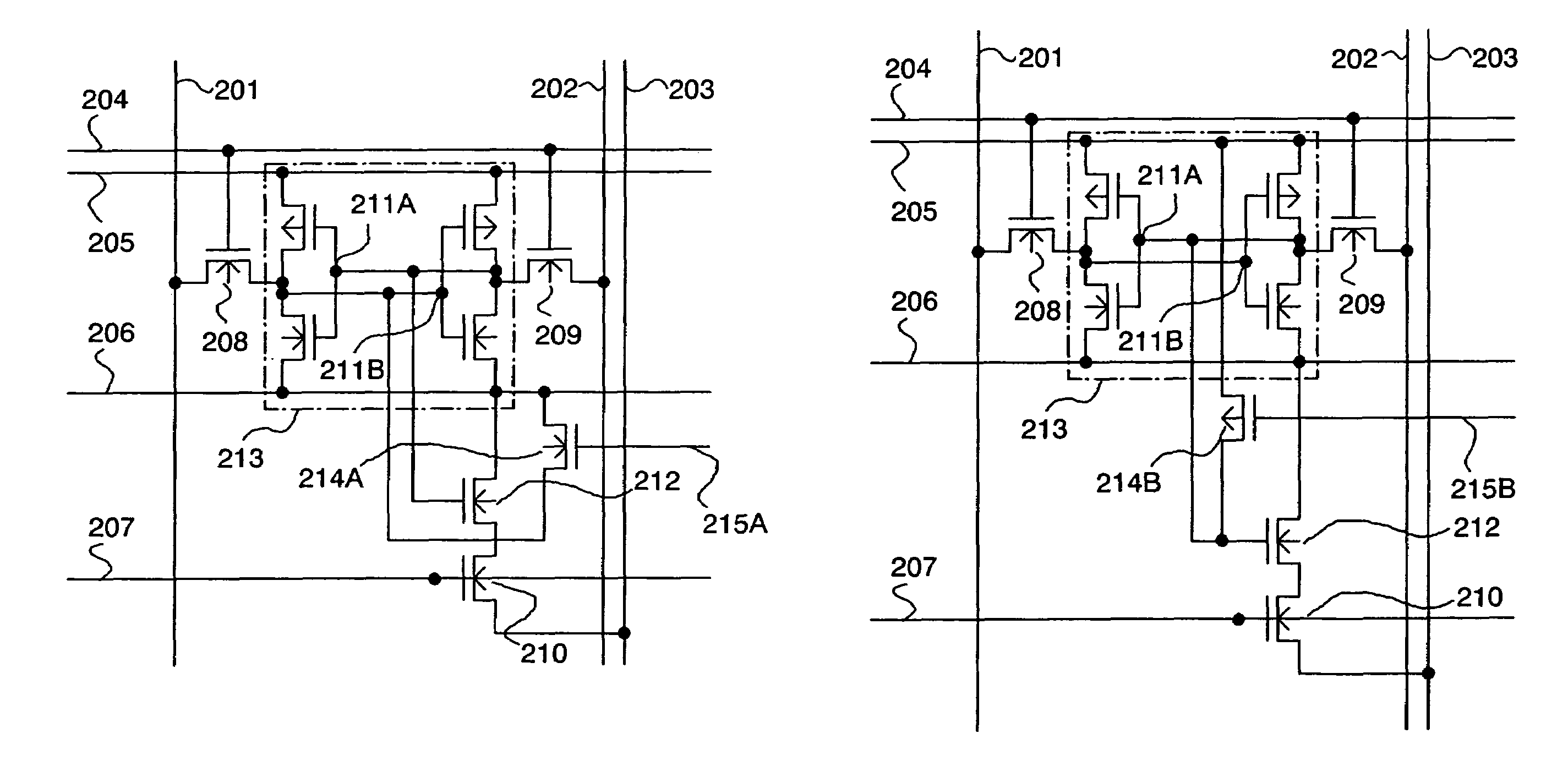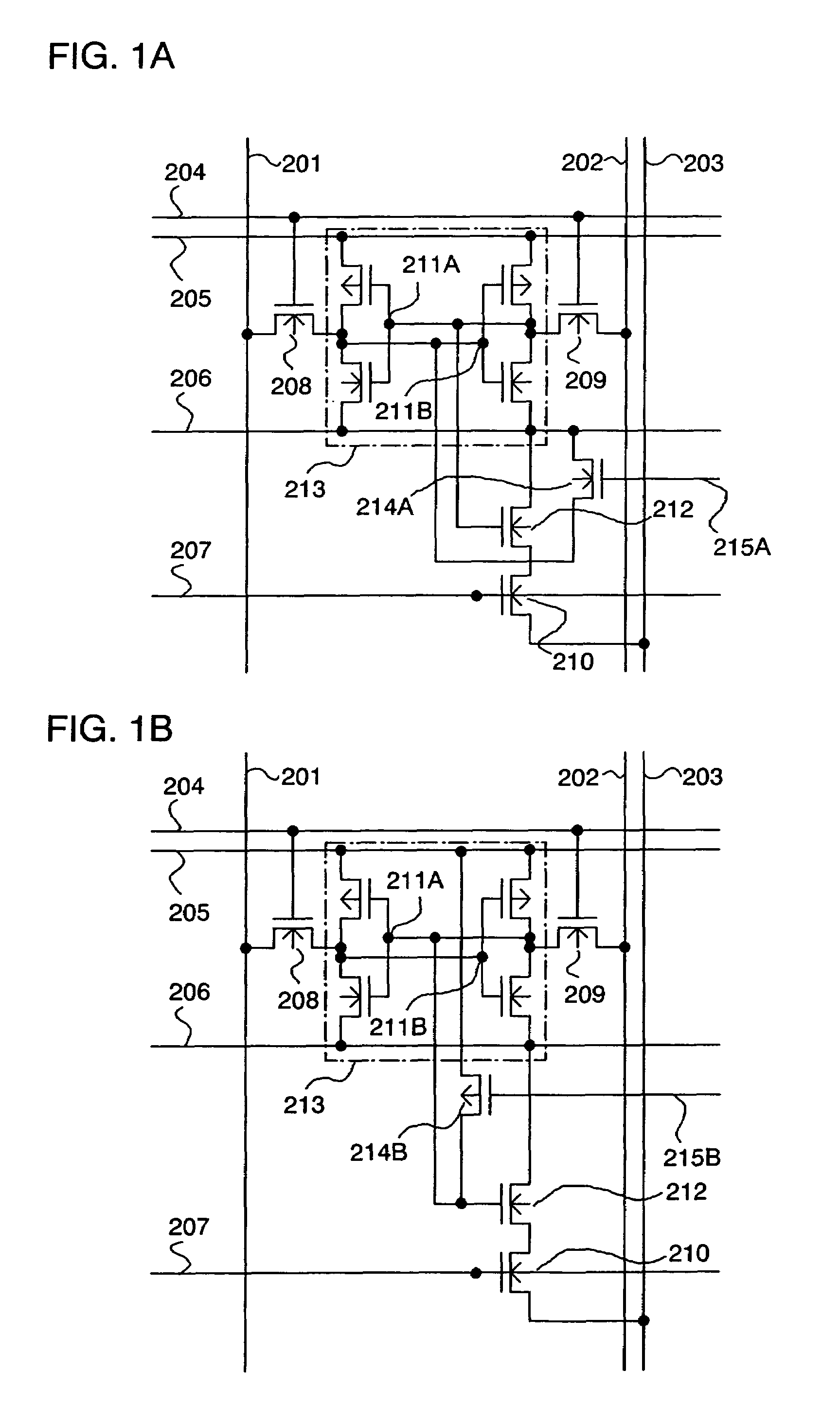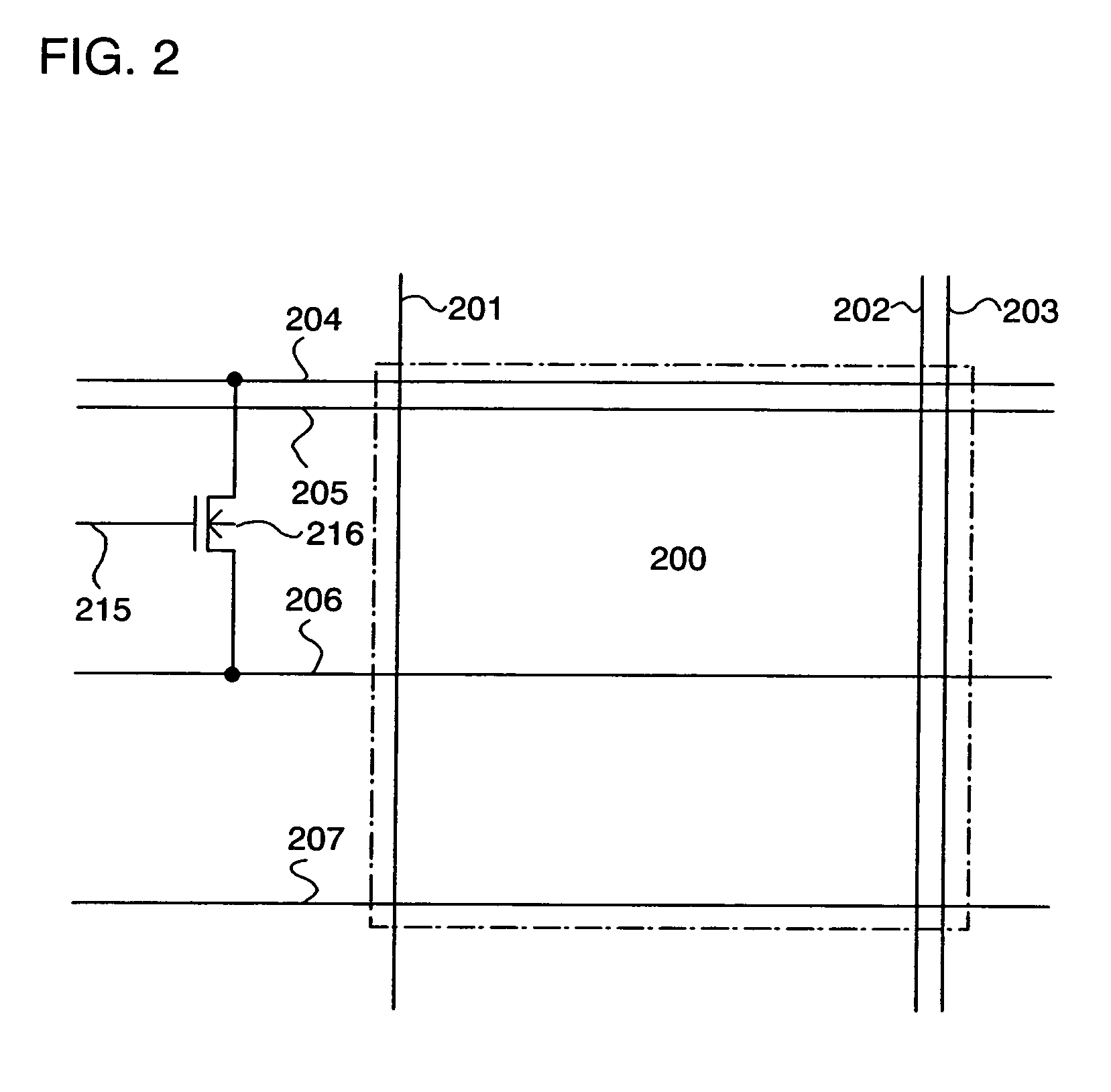Semiconductor device
a semiconductor and memory technology, applied in the field of memory devices, can solve the problems of large capacity of high access speed memory, data stored in cache memory cannot be specified immediately after, and the time for invalidation of valid bits cannot be reduced, so as to achieve low power consumption of the cpu, high speed, and low cost
- Summary
- Abstract
- Description
- Claims
- Application Information
AI Technical Summary
Benefits of technology
Problems solved by technology
Method used
Image
Examples
embodiment mode 1
[0048]A memory cell configuration that allows invalidation of valid bits in a cache memory to be performed at high speed is described with reference to FIGS. 1A to 3 and FIGS. 6 to 7B. Although the description is made using a power supply voltage of 5 V, the invention is not limited to this.
[0049]FIGS. 1A and 1B are circuit diagrams each showing a memory cell configuration of a valid bit in a cache memory according to this embodiment mode. In FIGS. 1A and 1B, a memory cell includes a power supply line 205, a ground line 206, a word line for writing 204, a word line for reading 207, a data line for writing 201, a data line for writing 202, a data line for reading 203, an N-channel transistor 208, an N-channel transistor 209, an N-channel transistor 210, an N-channel transistor 212, an N-channel transistor 214A, and an inverter circuit 213. The inverter circuit 213 includes two inverters. Writing data is inputted to the data line for writing 201, while inverted data thereof is inputte...
embodiment mode 2
[0065]In this embodiment mode, a different mode than Embodiment Mode 1 is described with reference to FIGS. 4A and 4B. FIGS. 4A and 4B are circuit diagrams each showing a memory cell configuration of a valid bit of a cache memory according to Embodiment Mode 2 of the invention. Basically, FIG. 4A has a similar configuration to FIG. 1A and FIG. 4B has a similar configuration to FIG. 7A; however, a resistor 217 is used instead of the N-channel transistor 214A as an element for the invalidation of valid bits. The resistor 217 preferably has a resistance value of several hundreds kΩ to several MΩ.
[0066]According to the circuit configurations shown in FIGS. 4A and 4B, the potential of the node 211B is fixed to 0 V by the resistor 217 even when a power supply is off. Since the potential of the node 211B is also 0 V when the power supply is on, the memory cell of a valid bit holds ‘0’. This is in the same state in which the invalidation of valid bits is performed. In that case, normal writ...
embodiment mode 3
[0072]In this embodiment mode, a different mode than Embodiment Modes 1 and 2 is described with reference to FIGS. 5A and 5B. FIGS. 5A and 5B are circuit diagrams each showing a memory cell configuration of a valid bit of a cache memory according to Embodiment Mode 3 of the invention. Basically, FIG. 5A has a similar configuration to FIG. 1A and FIG. 5B has a similar configuration to FIG. 7A; however, a capacitor 218 is used instead of the N-channel transistor 214A as an element for the invalidation of valid bits. The capacitance of the capacitor 218 is required to be determined such that the sum of the wiring capacitance of the node 211B and the capacitance of the capacitor 218 is larger than the sum of the wiring capacitance of the node 211A and the wiring capacitance of the N-channel transistor 212 for reading, so as to upset the balance between them. However, when the sum of the wiring capacitance of the node 211B and the capacitance of the capacitor 218 is too large, writing op...
PUM
 Login to View More
Login to View More Abstract
Description
Claims
Application Information
 Login to View More
Login to View More - R&D
- Intellectual Property
- Life Sciences
- Materials
- Tech Scout
- Unparalleled Data Quality
- Higher Quality Content
- 60% Fewer Hallucinations
Browse by: Latest US Patents, China's latest patents, Technical Efficacy Thesaurus, Application Domain, Technology Topic, Popular Technical Reports.
© 2025 PatSnap. All rights reserved.Legal|Privacy policy|Modern Slavery Act Transparency Statement|Sitemap|About US| Contact US: help@patsnap.com



